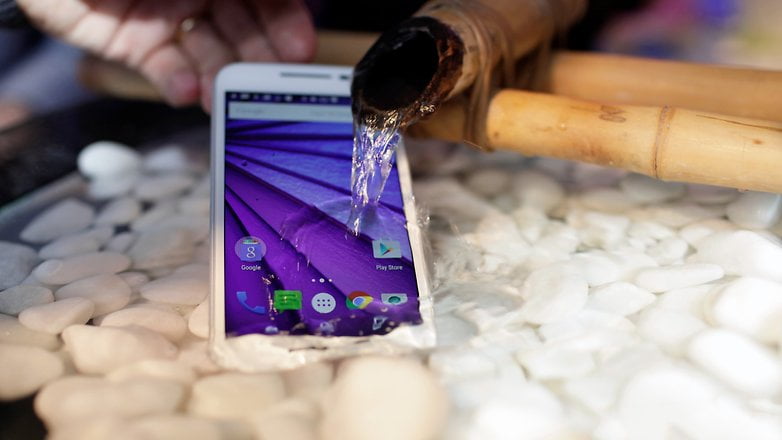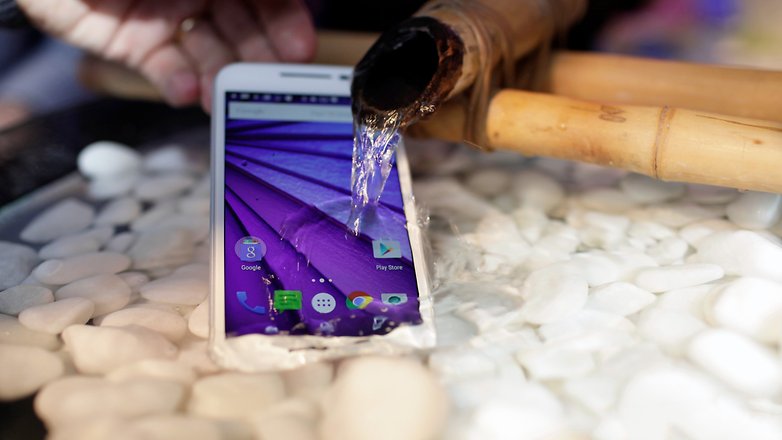All smartphones leave the factory with a resistance certification called an IP rating (Ingress Protection), however, all smartphones have different IP ratings. What do these ratings mean and what are the differences between smartphones? Let’s take a look.
Do these ratings have any link to the IP addresses we talk about regarding network connections? Well, no, young Jedi, as IP in this case means ‘Internet Protocol’ and refers to internet connections, which has no connection to water resistance.
How do I read the IPXX code?
The IP code is made up of two digits. The first digit indicates the level of protection against solid bodies and the second digit indicates the level of protection against liquids. The higher the digit, the better the protection.
However, it’s important to keep in mind that these evaluations are not only based on dust and water protection but also on water pressure protection, among other things. In addition, ratings are rather objective: it’s not the manufacturer that assigns them but the International Electrotechnical Commission (IEC). You can see below what each of the digits in an IP code mean.
| FIRST DIGIT | MEANING |
|---|---|
| 0 | No protection (this can also be represented with an X) |
| 1 | Protection against solid objects measuring up to 50 mm³ |
| 2 | Protection against solid bodies measuring up to 12 mm³ |
| 3 | Protection against solid objects measuring up to 2.5 mm³ |
| 4 | Protection against solid objects measuring up to 1 mm³ |
| 5 | Protection against dust, limited ingress of dust (posing no risk to the device) |
| 6 | Complete protection against dust |
- Motorola submersion test: we give the Moto X and Moto G a good soak
| SECOND DIGIT | MEANING |
|---|---|
| 0 | No protection (this can also be represented with an X) |
| 1 | Protection against vertically dripping water (condensation) |
| 2 | Protection against water spray when vertically tilted at 15° |
| 3 | Protection against water projections at any vertical angle up to 60° |
| 4 | Protection against water projections from all directions – minor ingress |
| 5 | Protection against jets of water from all directions – minor ingress |
| 6 | Protection against slight jets of water, limited ingress (under the casing, for example) |
| 7 | Protection against effects from immersion in liquids between 15 cm and 1 m in depth |
| 8 | Protection against long immersion periods and water pressure |
Ultimately, it’s important to understand that protection against immersion is directly linked to water pressure. This means that damages will be more significant if the device is exposed to a powerful jet of water than if it falls into a puddle.
That being said, it must be emphasized that even if a smartphone is completely protected against dust, it doesn’t mean that it’s also completely water resistant under all immersion levels or water pressures.
Which smartphones are waterproof?
For example, the Galaxy S5 has an IP67 rating. However, this doesn’t mean that it’s better than the Xperia Z2 which has an IP58 rating. Quite the opposite, in fact, as the first device may be completely protected against dust but the second device can be immersed under water for a longer period.
Pay attention to the technical datasheets. Manufacturers rarely equip their devices with well-rounded IPXX protection. Sony is one of the only ones. Samsung, for example, doesn’t provide the Note 4 or the Galaxy S6 with protection against water or dust.
Here’s a partial list of current smartphones that are protected against water or dust. It will be updated:
| MODEL | CERTIFICATION |
|---|---|
| Sony Xperia Z | IP57 |
| Sony Xperia Z1 | IP58 |
| Sony Xperia Z2 | IP58 |
| Sony Xperia Z3 | IP68 |
| Sony Xperia Z3 | IP68 |
| Sony Xperia Z5 / Z5 Compact | IP68 |
| Sony Xperia X Performance | IP68 |
| Sony Xperia XZ | IP68 |
| Samsung Galaxy S4 Active | IP67 |
| Samsung Galaxy S5 | IP67 |
| Samsung Galaxy S5 Active | IP67 |
| Samsung Galaxy S5 Mini | IP67 |
| Samsung Galaxy S7 / S7 edge | IP68 |
| Samsung Galaxy Xcover 3 | IP67 |
| Quechua Phone 5 | IP54 |
| iPhone 7 / 7 Plus | IP67 |
[Source:- Androidauthority]











